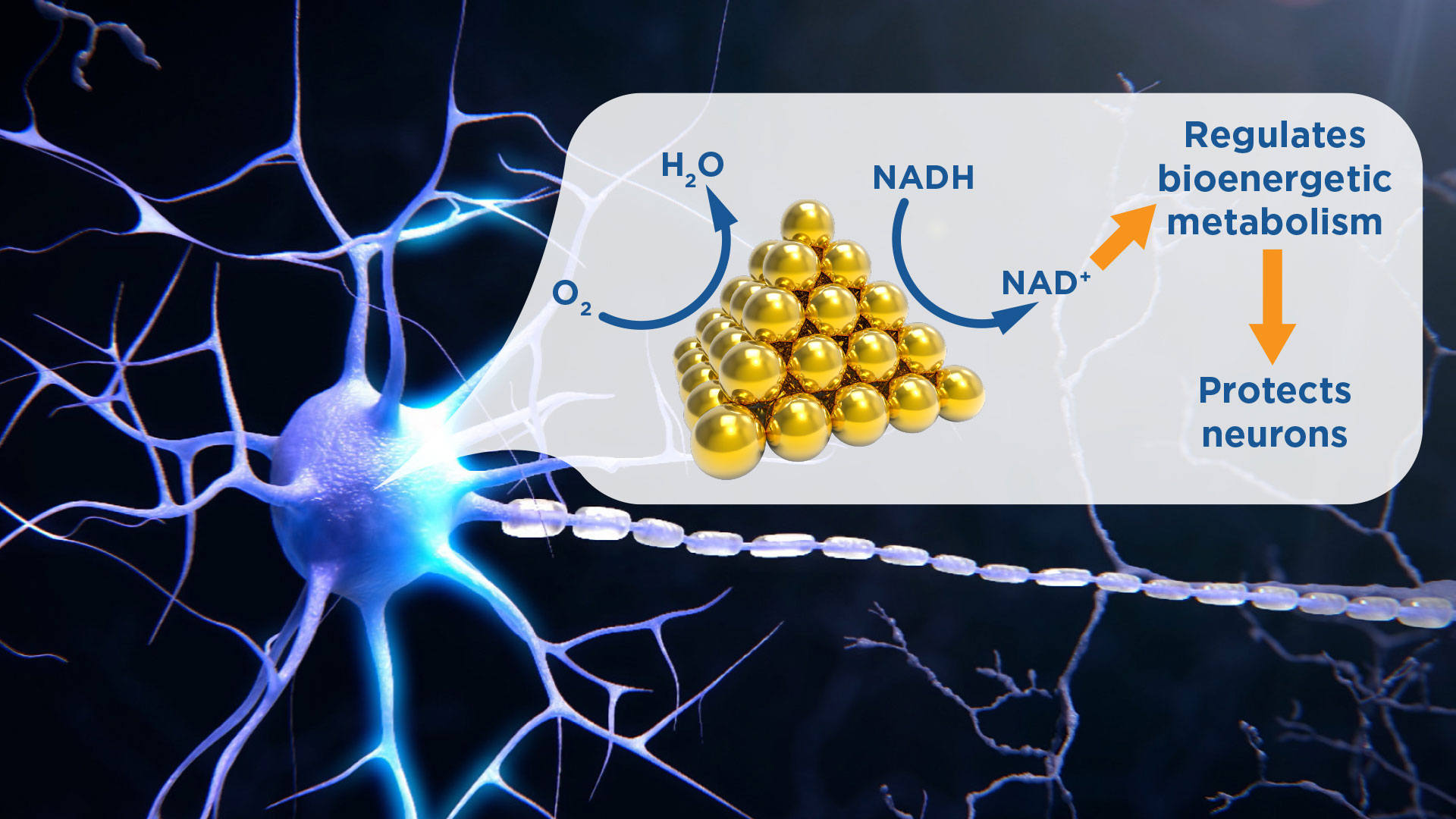COLUMBIA, SC — New research conducted by chemists at the University of South Carolina shows how nanoparticles of gold could help fight neurodegenerative diseases, such as Alzheimer’s Disease, Parkinson’s Disease, and ALS.
The secret lies in the way gold nanoparticles boost energy production in cells to help neurons survive, according to Hui Wang, a professor in the Department of Chemistry and Biochemistry. The particles are already showing promise in clinical trials, but the new research shines a light on what gives the particles this neuroprotective power.
“This project aims at gaining new insights that can guide us to design next-generation nanoparticle-based therapeutic agents for neurodegenerative diseases,” Wang says.
Wang’s research group conducted the research in collaboration with researchers at Clene Nanomedicine Inc., the University of Bordeaux and Neuro-Sys in France. The work was recently published in the interdisciplinary journal Small.
Wang studies how the structure of lab-made nanoparticles — as small as a human hair split 10,000 times — influences their characteristics and functions. In 2020, he published a paper showing how gold nanoparticles could mimic the behavior of enzymes that stimulate reactions in cells. This attracted the attention of biomedical researchers at Clene Nanomedicine, a Salt Lake City-based company that had developed a gold nanocrystal suspension called CNM-Au8®.
Previous studies had shown that Clene’s CNM-Au8 nanocrystals have neuroprotective effects — they help nerve cells in the brain survive — but “the mechanism underpinning the therapeutic effects of CNM-Au8 remained unclear,” Wang says.
Wang and his graduate students observed that CNM-Au8 fosters biochemical reactions that support production of adenosine triphosphate (ATP), the energy source used by cells. That energy boost made neurons remarkably more robust against toxins that would otherwise drain their energy, much like charging a smartphone battery keeps the device running longer.
Wang’s lab also studied how light interacts with CNM-Au8. They demonstrated that light illumination could effectively accelerate the reactions and thereby, enhance the neuroprotective effects further, Wang says.
While Wang’s lab probed the mechanistic details of CNM-Au8's functions, scientists at Clene Nanomedicine have been conducting clinical trials for using CNM-Au8 to treat ALS. On September 25, they announced that patients who were treated with CNM-Au8 had a significantly lower risk of death than patients who received a placebo, and without negative side effects. (Read more about the results.)
While clinical trials continue, Wang is already thinking about gaining deeper insights into the relationships between structure and properties of nanoparticles that promote biochemical reactions.
“We will further explore other catalytic functions of gold nanoparticles that are relevant to the bioenergy metabolism regulation and neuroprotection," Wang says. He will also look more closely at the possibility of using light to boost the neuroprotective effects.
“Although my research is very fundamental in nature, the insights gained from our research can guide the rational design of new nanomaterials for various applications,” Wang says.
Read Clene Nanomedicine’s announcement of the research results.

The gold nanocrystals in CNM-Au8 stimulate the conversion of NADH to NAD+, which supports the creation of ATP, which human cells use for energy. The resulting energy boost protects neurons. Image Source: Clene Nanomedicine